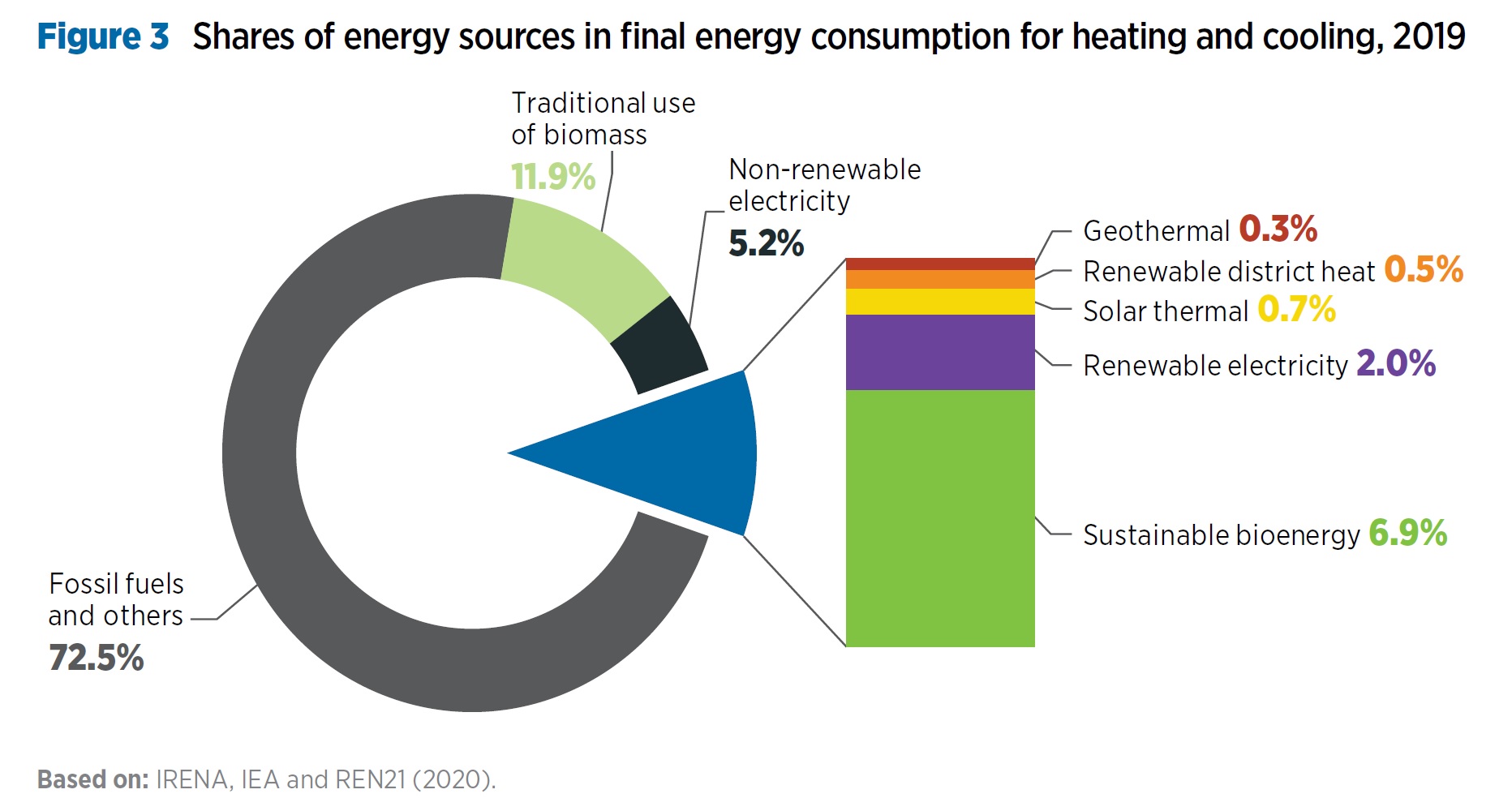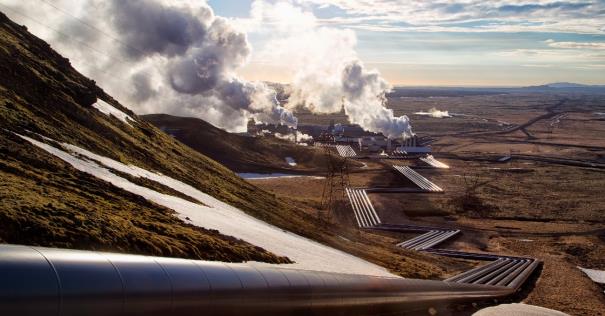Alongside the increasing demand for electricity being driven by economic growth, the global demand for sustainable heat is also increasing. This demand has led to a growing trend in the use of geothermal resources for heating and cooling applications where technically and economically feasible.
Since 2000, the geothermal sector has grown at an average rate of around 3.5% annually to reach an installed capacity of 16 gigawatt electrical in 2021. There was a slight acceleration in growth of around 5% between 2015 – 2021, but this still accounted for a mere 0.5% of global installed renewable electricity capacity. Meanwhile, geothermal heating and cooling applications grew faster, by around 9% between 2015 – 2020 to reach 107 gigawatt thermal in 2020, representing around 3% of the global installed renewable heating and cooling capacity.

To support countries in unlocking the underutilised geothermal’s potential and promote its widespread deployment, IRENA established the Global Geothermal Alliance (GGA) in 2015 as a platform for enhancing dialogue, cooperation and coordinated action to increase the share of installed geothermal electricity and heat generation worldwide. The Agency also published in February of this year a report titled Global Geothermal Market and Technology Assessment, developed in collaboration with the International Geothermal Association, to shed light on the geothermal sector and identify key trends likely to shape the market growth in the near future.
During its 25th Council in Abu Dhabi in late May 2023, IRENA organised a session to share the key findings of the report and promote dialogue on the critical role of geothermal in the energy transition. Speakers discussed recent trends in the geothermal sector, challenges hindering its development, potential solutions, and opportunities for growing the market worldwide.
“Geothermal energy potential is still largely untapped across different regions,” said Gurbuz Gonul, Director of Country Engagement and Partnerships, IRENA. “International collaboration will boost its deployment, including sharing global best practices and insights for the benefit of the geothermal sector. In this context, IRENA is coordinating the Global Geothermal Alliance, a platform of enhancing dialogue, cooperation and coordinated action among stakeholders to accelerate geothermal deployment.”
In recent years, the geothermal market growth has been driven by developments in Indonesia, Kenya, Türkiye and the United States. Although data on new plants commissioned in 2021 shows that geothermal energy competitively generated electricity at a levelised cost of electricity of USD 0.068/kWh, countries still face challenges in attracting investments to geothermal development. This problem is due to higher perceived risks during the early phases of exploration as well as higher upfront capital expenditures, compared with other energy technologies. Other challenges are related to policy and regulatory frameworks, institutional and technical expertise, and technological advancements, which affect both electricity generation and heating and cooling.
The report shows that legal and regulatory frameworks, incentives, and risk mitigation instruments are key enablers for geothermal market growth. Risk mitigation schemes in particular help to address the resource risk associated with geothermal development in the early stages of development. These schemes are applied in different ways depending on the level of development of geothermal markets. In nascent markets, public funds are mainly used for risk mitigation, while resource risk insurance schemes are commonly applied in mature markets where a portfolio of geothermal projects exists.
In recent years, several trends that are likely to lead to widespread expansion in geothermal development and utilisation have emerged. For instance, due to their widespread availability, there has been an uptake in the development and utilisation of low-medium temperature geothermal resources. A key driver for the development of low-medium temperature resources is the advancement in the technologies for utilising these resources, such as the binary cycle technologies for electricity generation as well as the growing need for sustainable and secure supply of energy for heating and cooling.
With binary technology, geothermal heat is used to boil a working fluid, usually an organic compound with a low boiling point. The working fluid is vaporised in a heat exchanger and used to turn a turbine. The water is then injected back into the ground to be reheated. Binary technology allows geothermal power plants to be operated in a flexible way, which is ideal for the stabilisation of grids with high penetration of variable renewable electricity sources. As a result, the deployment of binary power plants has increased to over 50% for new plants commissioned between 2015 and 2021, compared to only 12% before 2000.
At the same time, the use of geothermal for heating and cooling applications for agri-food and industry, as well as for district heating and cooling among others is also growing. Driven by decarbonisation agenda and the need to secure domestic sources of energy, countries are likely to increase the development and utilisation of low-medium temperature resources.
The report makes the following recommendations for policy makers, project developers, industry leaders and financiers to consider:
- Promote widespread development and utilisation of all available sources of geothermal energy.
- Position geothermal as a key energy solution to drive the energy transition towards the achievement of the Sustainable Development Goals and climate action.
- Improve enabling frameworks to foster investments in geothermal energy.
- Foster cross-industry synergies and harmonisation between geothermal and other sectors.
- Promote technological innovation, research, and development to scale up geothermal development.
- Strengthen international, regional, and national co-operation among partners.
Members present at the Global Geothermal Market during the 25th Council agreed that increased collaboration between countries – among others through the GGA – will be beneficial to enhance current efforts to scale up geothermal energy globally. Members noted the importance of urgently addressing the investments challenges that geothermal energy faces in comparison with other renewable technologies.


